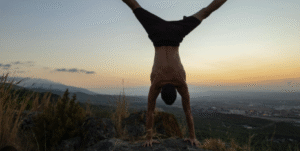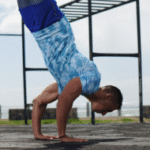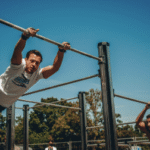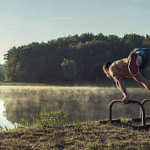How to overcome fear of handstands
One of the biggest hurdles in learning to handstand isn’t a lack of strength or flexibility—it’s fear . The thought of going upside down, losing control, and potentially falling can be intimidating. This is a completely normal and valid fear. Overcoming it is a process that involves building confidence, strengthening your body, and learning how to bail out safely. For anyone in Houston ready to face this challenge, here’s a detailed guide on how to overcome handstand fear.
- Acknowledge and Understand Your Fear
The first step is to recognize that your fear is real and has a purpose: to keep you safe. Instead of fighting it, understand it. Ask yourself what you’re truly afraid of:
Are you afraid of falling and hurting yourself?
Are you afraid of not being strong enough to hold your body?
Are you afraid of the feeling of being upside down?
Answering these questions will help you tailor your training to address your specific anxieties.
- Master the Exit Strategy: Learn How to Fall
The fear of falling is the most common handstand fear. The best way to overcome it is to learn how to fall safely. Practicing this skill repeatedly will train your nervous system to know that you can handle a fall without injury.
The Cartwheel Bail: This is the most popular and safest way to bail out of a handstand. If you feel yourself falling backward, simply turn your body and let one leg drop to the side as if you’re starting a cartwheel. This gets your feet back on the ground without a hard landing on your back. Practice this from a handstand against the wall to get comfortable with the movement.
Forward Roll: If you’re over-rotating and falling forward, a forward roll is a great way to bail. From a handstand, tuck your chin into your chest and let your body curl into a ball, rolling out of the position. Practice this from a squatting or kneeling position first, then from a handstand against the wall to build confidence.
- Build Foundational Strength and Confidence
Your mind’s fear often stems from a lack of confidence in your body’s ability to support itself. Building strength in the right areas will give your mind the proof it needs that you can do it.
Pike Push-Ups: These push-ups build the shoulder and core strength you’ll need. The inverted position gets you used to having your head below your hips without being fully upside down.
Hollow Body Holds: This exercise is the single most important for handstands. It teaches you to keep your core engaged and your body in a straight line, which is crucial for stability.
Crow Pose (Frogstand): This arm balance from yoga is a great precursor to handstands. It gets you used to supporting your weight on your hands and builds the necessary wrist and forearm strength.
- Use the Wall as Your Partner, Not a Crutch
The wall is a powerful tool for building confidence, but you need to use it correctly.
Belly-to-Wall Handstand: This is the best way to practice proper handstand form. Walk your hands toward the wall as you walk your feet up until your chest and stomach are touching the wall. This position forces you to engage your core and prevents you from “banana-ing” (arching your back). You’ll build confidence in your ability to hold a straight, stable line.
Back-to-Wall Handstand: This is a great starting point for beginners. Kick up to the wall, letting the wall support you. This gets you used to being inverted. Once you’re comfortable, try lifting one foot off the wall for a few seconds to practice balancing.
- Find a Safe Environment and a Coach
The environment you train in is crucial. A soft floor, like those found in gymnastics or calisthenics gyms, can help you feel more secure.
Gyms in Houston: Houston offers several excellent options for handstand training:
Houston Gymnastics Center: They offer adult gymnastics classes on Tuesday and Thursday evenings for beginners. You’ll learn foundational skills in a safe environment with professional equipment like foam pits.
Mekanix Houston: This calisthenics gym specializes in bodyweight training and has “Hand Balancing” classes for all skill levels. A coach can provide a structured program and spot you as you work on more advanced moves.
Calisthenics Club Houston: Located in Montrose, they also offer handstand classes designed to help you build strength, body awareness, and conquer your fear.
Private Coaching: If you’re still struggling, a private coach can be a game-changer. They can identify your specific fears and physical limitations and create a tailored plan to help you progress safely.
By taking a slow, progressive approach and focusing on safety and foundational strength, you can systematically dismantle your fear and move one step closer to achieving a freestanding handstand.

How to overcome fear of handstands
Route
Calisthenics Gym Houston Functional Bodyweight Training
Secondary phone: (346) 483-3195
Email: info@calisthenicsclubhouston.com
URL: https://calisthenicsclubhouston.com/
Monday 6:00 AM - 7:00 PM Tuesday 6:00 AM - 7:00 PM Open now Wednesday 6:00 AM - 7:00 PM Thursday 6:00 AM - 7:00 PM Friday 12:00 PM - 6:30 PM Saturday 9:45 AM - 12:00 PM Sunday 3:00 PM - 5:00 PM





